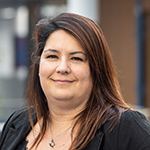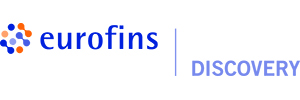Accelerating hit finding programs: Echo MS and RapidFire-MS key advantages
11 May 2023
Shares
- Like
- Digg
- Del
- Tumblr
- VKontakte
- Buffer
- Love This
- Odnoklassniki
- Meneame
- Blogger
- Amazon
- Yahoo Mail
- Gmail
- AOL
- Newsvine
- HackerNews
- Evernote
- MySpace
- Mail.ru
- Viadeo
- Line
- Comments
- Yummly
- SMS
- Viber
- Telegram
- Subscribe
- Skype
- Facebook Messenger
- Kakao
- LiveJournal
- Yammer
- Edgar
- Fintel
- Mix
- Instapaper
- Copy Link
In this on-demand webinar, we present the most advanced label-free technologies in identifying successful hit series for Hit-to-Lead and Lead-Optimization programs.
About this on-demand webinar
The goal of drug discovery programs for small molecule developments is clear: to identify the most promising hits and leads with “drug-like” properties in the shortest time. Successful preclinical candidates are ultimately selected by employing robust hit finding strategies, which combine relevant and innovative assays with reproducible, miniaturized and reliable in vitro tests.
Specifically, we outline how Eurofins Discovery:
- Integrated the Echo® MS into our labs and explored and validated its capabilities
- Ran a High Throughput Screening (HTS) Proof of Concept on this new platform
- Determines which Mass Spectrometry (MS) method is most appropriate for a particular target or endpoint
- Has established a portfolio of services based on complementary biophysical technologies to provide state-of-the-art hit confirmation approaches.
Installation & exploration of the Echo MS Capabilities
Eurofins Discovery was the first CRO specializing in small molecule research to integrate the Echo MS in its laboratories, in combination with a compact and flexible HighRes® robotic platform, providing clients with the possibility of analyzing 65,000+ data points per day. Our HTS experts tested multiple conditions including assay buffers, carrier solvents, number of droplets ejected and the flow rate of carrier solvents. These tests were instrumental in building an optimized method based on the physicochemical properties of the substrate or product to be quantified. We are now able to quickly develop acoustic droplet-MS methods and define enzymatic parameters (i.e. Km, Vm) of substrates with various chemical properties and enzyme classes, reducing assay set-up time and enzyme consummation.
HTS Proof of Concept
Eurofins Discovery’s scientific programs leaders in Hit Finding and experts in biology and chemistry ran a HTS Proof of Concept based on a subset of 48,000 compounds from our compound library. We were able to show the robustness, as well as the inter- plate and Z’ homogeneity obtained on RapidFire-MS and Echo MS, respectively.
Which MS Method to use for a specific target or endpoint?
As drug discovery innovation opens new paths to HTS screening possibilities, we strive to implement the most relevant technology and explore the depths of the new platform, in order to help guide our clients on how to run successful and efficient Hit-Finding programs.
In this on-demand webinar we explore the key advantages of the Echo MS in relation to the RapidFire-MS and how we can determine which will ultimately provide valuable decision-making data. We will provide information on how to effectively develop an Echo MS method and how to combine it into a comprehensive screening cascade. Eurofins Discovery provides the largest selection of off-the-shelf assays, cost-effective solutions and the flexibility to create custom tests and cascades. These include highly reliable standard or custom-developed assays to study in vitro MS binding, enabling the monitoring of multiple binding in tissue or cell lysates and measuring the engagement of compounds with their respective targets. We conclude the on-demand webinar with an overview of Eurofins Discovery’s latest label-free biophysical methods (Biacore™ 8K+ for SPR, Dianthus for Spectral Shift & MST/TRIC, MicroCal PEAQ-ITC), available for researchers looking to bolster their Hit Finding projects.
Key takeaways
- The latest innovations of label-free technologies and their advantages in identifying successful Hit Finding programs
- How to quickly develop acoustic droplet-MS methods and define enzymatic parameters of substrates with various chemical properties and enzyme classes
- The optimization of screening cascades with reduced assay set-up time and enzyme consummation
- How to gain access to the broadest range of off-the-shelf assays, as well as the creation of custom tests and cascades.
Our speakers


Celine Legros, Drug Discovery Partnership Director, Eurofins Discovery
Celine Legros, PhD, Drug Discovery Partnership Director, is deeply involved in the design of complex projects, including Hit-Finding, Hit-to-Lead and Lead-Op programs. Prior to joining Eurofins, Dr. Legros was Scientific Project Leader in the Screening Department at the Institut de Recherches Servier, France, where she was involved in neuroscience, cardio-metabolic diseases, immune-inflammation, and oncology projects, from HTS through to Lead-Optimization. Dr. Legros holds a Ph.D. in Animal Physiology (melatonin circanual rhythm and melatonin receptors) from the University of Tours, France, and completed a postdoctoral fellowship at the Blood Brain Barrier Group at King’s College London, UK.


Dany Jeanne Dit Fouque, Development Analytic Engineer, Eurofins Cerep
Dany Jeanne dit Fouque, PhD, is a Mass Spectrometry Analytical Development Engineer at Eurofins Cerep. He has 7 years of experience in analytical chemistry with in-depth knowledge in UHPLC-MS/MS method development, enzymatic reaction and MS-Binding using mass spectrometry. Prior to joining Eurofins, he worked in the academic sector on several R&D projects to develop and optimize a new methodology using UHPLC-MSn experiments to identify and quantify isomeric/isobaric compounds in mixture. Dr. Jeanne dit Fouque received his Ph.D. in Mass Spectrometry from the University of Brest, France.




